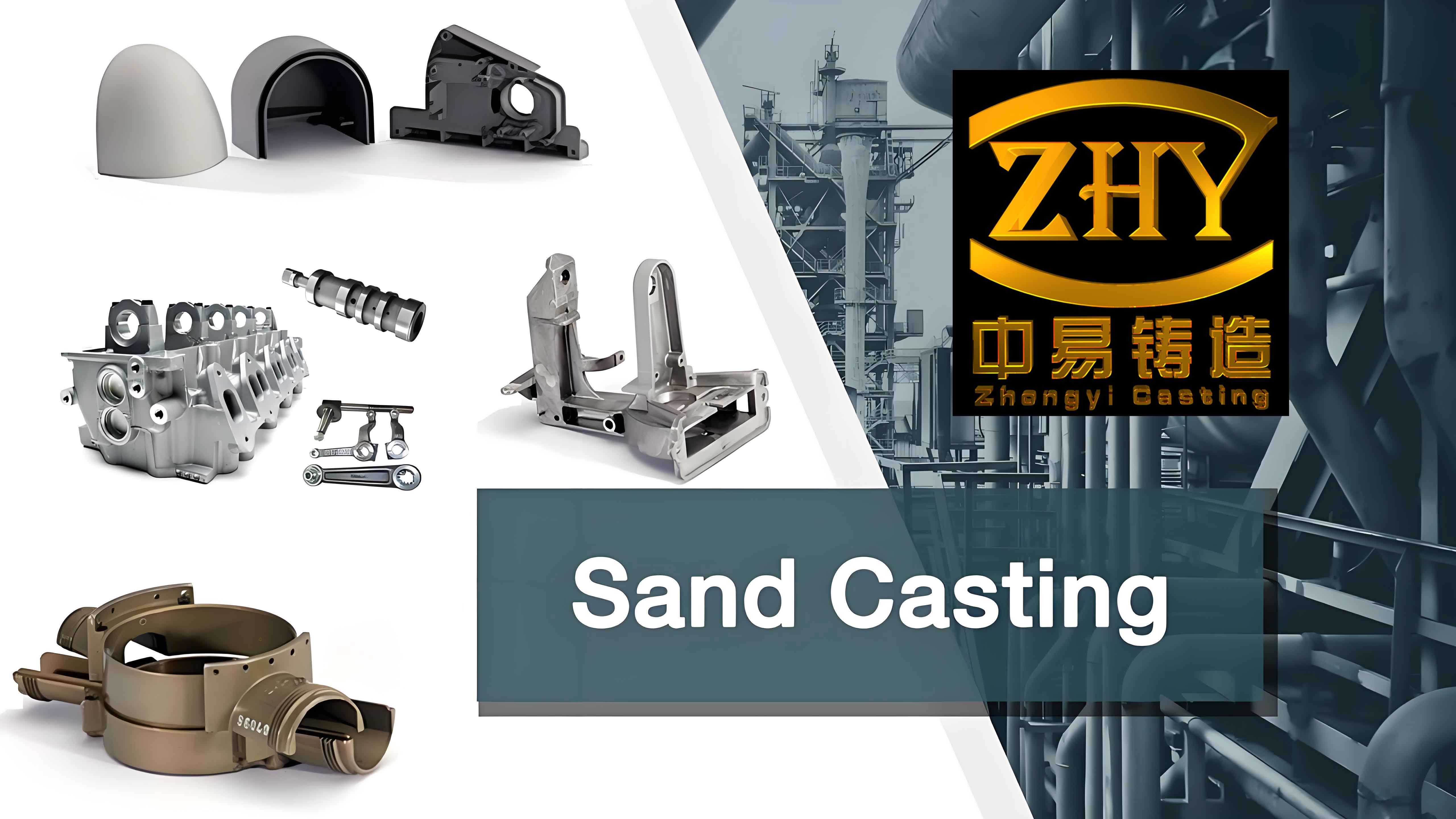Sand casting is widely used manufacturing process for producing complex-shaped components. However, the occurrence of casting defects is a common challenge that can significantly impact the quality and performance of sand casting parts. This article focuses on advanced inspection methods for detecting casting defects in sand casting parts, providing in-depth analysis and practical guidance.

1. Introduction to Sand Casting and Casting Defects
Sand casting is a process where molten metal is poured into a cavity formed in sand to create the desired part shape. Casting defects can arise due to various factors such as improper mold design, molten metal temperature, pouring speed, and solidification conditions. Common casting defects include porosity, shrinkage cavities, inclusions, cracks, and misruns.
2. Traditional Inspection Methods and Their Limitations
Traditional inspection methods for sand casting parts typically include visual inspection, liquid penetrant testing, and magnetic particle inspection.
- Visual inspection relies on the human eye to detect surface defects but may miss internal or subtle defects.
- Liquid penetrant testing is effective for detecting surface cracks but is limited to accessible surfaces.
- Magnetic particle inspection is suitable for ferromagnetic materials and may not be applicable to all sand casting alloys.
3. Advanced Non-Destructive Testing (NDT) Methods
3.1 Ultrasonic Testing
Ultrasonic testing uses high-frequency sound waves to detect internal defects in sand casting parts. It can identify porosity, inclusions, and cracks by analyzing the reflection and transmission of sound waves.
Example: In a sand casting component for the automotive industry, ultrasonic testing successfully detected internal porosity that was not visible through visual inspection, preventing potential failures in the final product.
3.2 X-Ray Radiography
X-ray radiography provides a detailed image of the internal structure of sand casting parts. It is highly effective in detecting shrinkage cavities, inclusions, and internal cracks.
For instance, in the aerospace sector, X-ray radiography is routinely used to inspect critical sand casting parts for turbine engines to ensure their integrity and safety.
3.3 Eddy Current Testing
Eddy current testing is useful for detecting surface and near-surface defects in conductive sand casting parts. It can identify cracks, porosity, and material variations.
4. Advanced Optical Inspection Techniques
4.1 Computer Vision-Based Inspection
Computer vision systems use cameras and image processing algorithms to perform automated inspection of sand casting parts. They can detect surface defects, measure dimensions, and compare against CAD models.
Example: A computer vision-based inspection system in a foundry was able to inspect hundreds of sand casting parts per hour with high accuracy, reducing the reliance on manual inspection.
4.2 3D Scanning
3D scanning creates a digital model of the sand casting part, allowing for detailed analysis of shape and dimensional accuracy. It can identify deviations from the design and detect hidden defects.
5. Thermal Inspection Methods
5.1 Infrared Thermography
Infrared thermography detects temperature variations on the surface of sand casting parts, which can indicate defects such as porosity and cracks.
For example, in a large-scale sand casting project for industrial machinery, infrared thermography identified areas of heat dissipation caused by internal defects, enabling targeted repair.
5.2 Thermal Diffusivity Testing
This method measures the thermal diffusivity of the material to assess its quality and detect defects that affect heat transfer.
6. Inspection during the Casting Process
6.1 In-Mold Sensors
In-mold sensors can monitor parameters such as temperature, pressure, and solidification rate during the casting process, providing real-time feedback for defect prevention.
6.2 Mold Flow Simulation
Mold flow simulation software predicts the flow of molten metal and potential defect areas before the actual casting, allowing for process optimization.
7. Comparative Analysis of Inspection Methods
A comparison of the different inspection methods in terms of their detection capabilities, accuracy, cost, and application scenarios is presented in Table 1.
| Inspection Method | Detection Capability | Accuracy | Cost | Application Scenarios |
|---|---|---|---|---|
| Ultrasonic Testing | Internal defects | High | Moderate | Aerospace, automotive |
| X-Ray Radiography | Internal defects | Very High | High | Aerospace, medical |
| Eddy Current Testing | Surface and near-surface defects | Moderate | Low | Conductive materials |
| Computer Vision-Based Inspection | Surface defects, dimensions | High | Moderate | Mass production |
| 3D Scanning | Shape and dimensional accuracy | Very High | High | Precision parts |
| Infrared Thermography | Surface defects | Moderate | Low | Large-scale castings |
8. Integrated Inspection Approaches
Combining multiple inspection methods can enhance the detection of casting defects and provide a more comprehensive assessment of the quality of sand casting parts. For example, using ultrasonic testing in combination with X-ray radiography can cover both internal and surface defects.
9. Challenges and Future Trends
The inspection of sand casting parts faces challenges such as the complexity of defect types, the need for rapid inspection in high-volume production, and the development of new materials and casting processes. Future trends include the integration of artificial intelligence and machine learning in inspection systems for improved defect recognition and the development of more portable and cost-effective inspection equipment.
10. Conclusion
The detection of casting defects in sand casting parts is crucial for ensuring the quality and reliability of the final products. Advanced inspection methods offer enhanced capabilities and accuracy compared to traditional techniques. By selecting the appropriate inspection methods and integrating them as needed, foundries can minimize the occurrence of defects, improve production efficiency, and meet the stringent quality requirements of various industries.
It is important to note that continuous research and development in the field of inspection technologies will further advance the capabilities and effectiveness of defect detection in sand casting parts, contributing to the advancement of the manufacturing industry as a whole.
